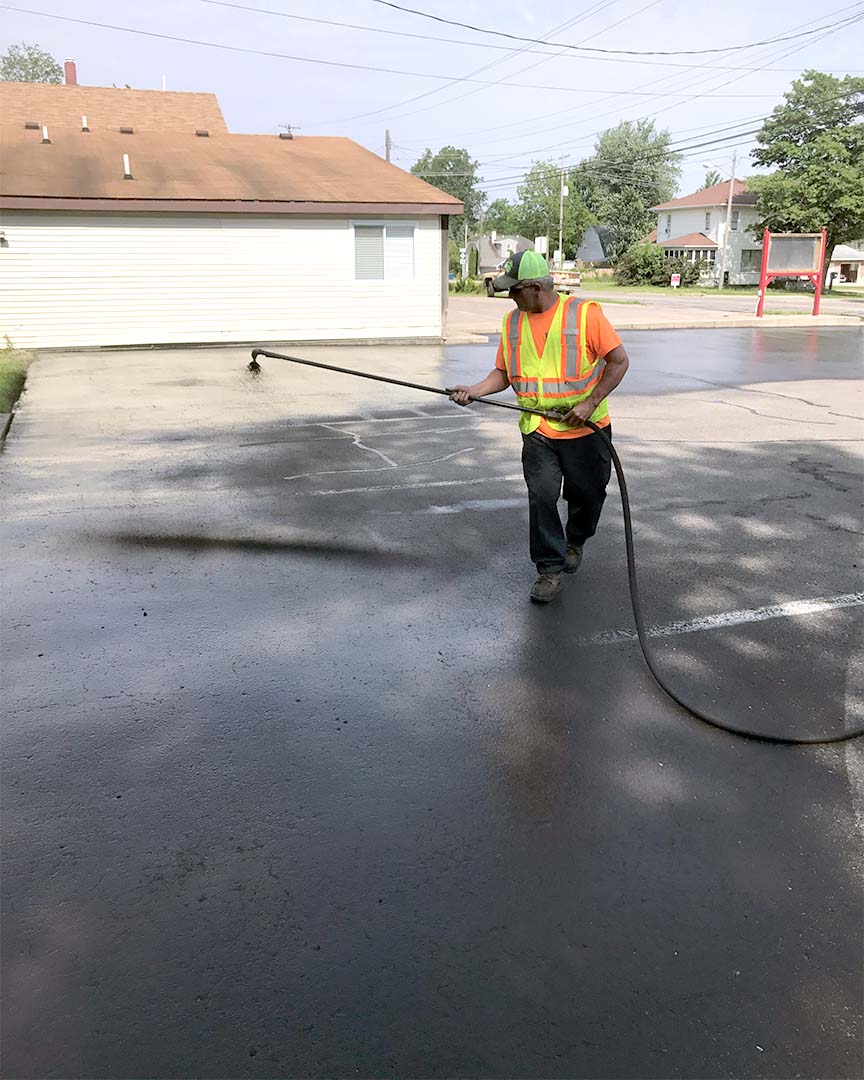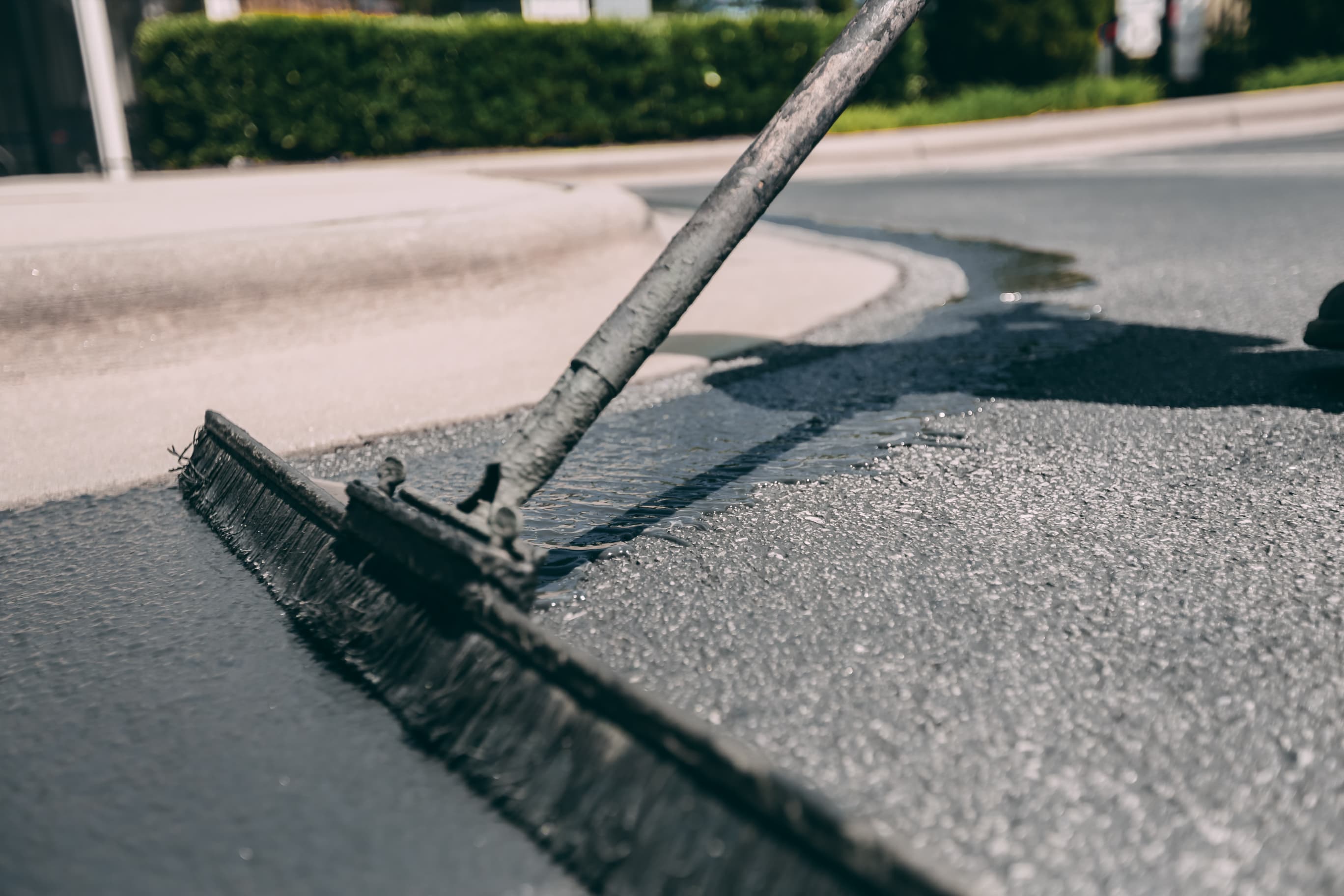Swift Solutions for Asphalt Spot Repair: Optimum Securing Strategies
Cold Mix Asphalt Vs. Hot Mix Asphalt: Which Is Right for You?

Make-up Differences
Cold mix and hot mix asphalts differ substantially in their composition, with unique attributes that affect their performance and applications. Cold mix asphalt is generated by emulsifying the asphalt binder with water and an emulsifying agent before mixing it with accumulation. This method permits the asphalt to be convenient at lower temperatures, making it suitable for momentary fixings and for usage in colder weather conditions. Warm mix asphalt, on the various other hand, is manufactured at high temperature levels, usually in between 300-350 ° F, which aids to accomplish better compaction and a more long lasting final product. The warm mix asphalt production procedure entails warming the accumulation and asphalt binder separately prior to incorporating them at the asphalt plant.
Additionally, chilly mix asphalt tends to be much less thick and much more adaptable than warm mix asphalt. This adaptability makes it better matched for areas with higher levels of motion, such as driveways or roadways with rush hour. On the other hand, warm mix asphalt is recognized for its high resilience and resistance to rutting and cracking, making it a favored selection for freeways and high-traffic roadways where durability is crucial.
Installment Refine Variations
The procedure of mounting cold mix and hot mix asphalt displays remarkable differences in their treatments and needs. Cold mix asphalt, being an extra flexible product, can be used directly from the bag or container onto the fracture or damaged location. It requires very little preparation work, such as cleaning the area and compacting the cool mix with hand tools. This makes it a convenient choice for fast and short-term repairs. In contrast, hot mix asphalt necessitates a more intricate setup process. It involves heating up the blend to high temperatures before laying it down on an effectively ready base. The prep work consists of compacting the base, using a tack layer, and making use of heavy equipment like pavers and compactors for a resilient and smooth coating. As a result of the heating needs, hot mix asphalt installations are normally accomplished by specialists with specialized devices, making sure a more structurally sound and permanent result.
Sturdiness and Longevity Aspects
When considering asphalt choices, toughness and long life are important variables to examine More Bonuses for long-term sidewalk he said performance. Hot mix asphalt (HMA) is understood for its remarkable durability and longevity.
In terms of durability, HMA normally surpasses CMA because of its exceptional strength and resistance homes. HMA pavements have a longer life span, calling for less regular repairs and upkeep, which can equate to cost financial savings in the future. Additionally, HMA sidewalks are a lot more easily personalized to fulfill particular task needs, better enhancing their resilience.
Price Considerations
Taking into consideration the economic ramifications is an essential facet when evaluating the choice in between hot mix asphalt (HMA) and cold mix asphalt (CMA) for sidewalk tasks. While the initial expense of warm mix asphalt is commonly greater than that of cool mix asphalt, HMA commonly offers an extra affordable remedy in the lengthy run because of its remarkable toughness and long life. HMA is recognized for its ability to withstand hefty traffic tons and severe weather, reducing the need for constant repair work and upkeep. On the various other hand, chilly mix asphalt is a lot more budget-friendly in advance however may need more constant patching and resurfacing, bring about higher maintenance prices over time.
Along with material costs, it's crucial to think about the expenses related to setup and maintenance when contrasting HMA and CMA. HMA normally needs customized tools and skilled labor for correct installment, which can influence total project prices. On the other home hand, CMA is less complicated to deal with and can typically be used using less complex techniques, potentially reducing setup costs. Eventually, the choice between HMA and CMA must take into consideration not simply the initial price but additionally the long-lasting monetary effects to figure out the most economical option for the details sidewalk task.
Environmental Effect Contrast
Contrast of the ecological impacts between warm mix asphalt (HMA) and cold mix asphalt (CMA) discloses distinct distinctions in sustainability methods. HMA manufacturing requires high temperature levels, causing increased power usage and greenhouse gas discharges. The procedure additionally releases unstable organic substances (VOCs) and dangerous air contaminants (HAPs) right into the atmosphere. On the other hand, CMA is generated and used at lower temperatures, minimizing energy use and discharges dramatically. The lower manufacturing temperatures of CMA lead to lowered gas intake and reduced levels of carbon dioxide emissions, making it a more environmentally friendly alternative.
Furthermore, the use of CMA typically involves recycling existing asphalt sidewalk, advertising resource preservation and decreasing the amount of waste sent to land fills. By opting for CMA over HMA, roadway building tasks can add favorably to ecological preservation initiatives.
Conclusion
Finally, the selection between cold mix asphalt (CMA) and hot mix asphalt (HMA) depends upon various variables such as composition, installation procedure, longevity, longevity, price, and ecological impact. cold mix asphalt. While CMA offers a fast and cost-efficient solution for minor repair work, HMA makes sure superior resilience and longevity for rush hour areas. Consider these variables carefully to figure out which type of asphalt is the ideal choice for your paving requires

Considering the monetary implications is a vital aspect when evaluating the choice between warm mix asphalt (HMA) and chilly mix asphalt (CMA) for pavement projects. While the preliminary cost of hot mix asphalt is usually greater than that of cool mix asphalt, HMA often offers an extra cost-efficient option in the lengthy run due to its premium longevity and durability. cold mix asphalt.Contrast of the ecological effects in between hot mix asphalt (HMA) and cool mix asphalt (CMA) reveals distinct distinctions in sustainability methods.In final thought, the selection in between cool mix asphalt (CMA) and warm mix asphalt (HMA) depends on various elements such as make-up, installation process, durability, long life, expense, and environmental impact